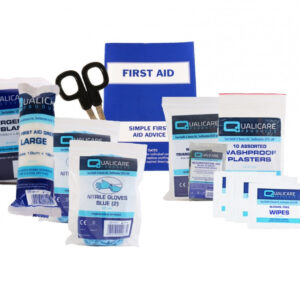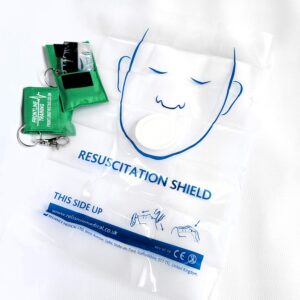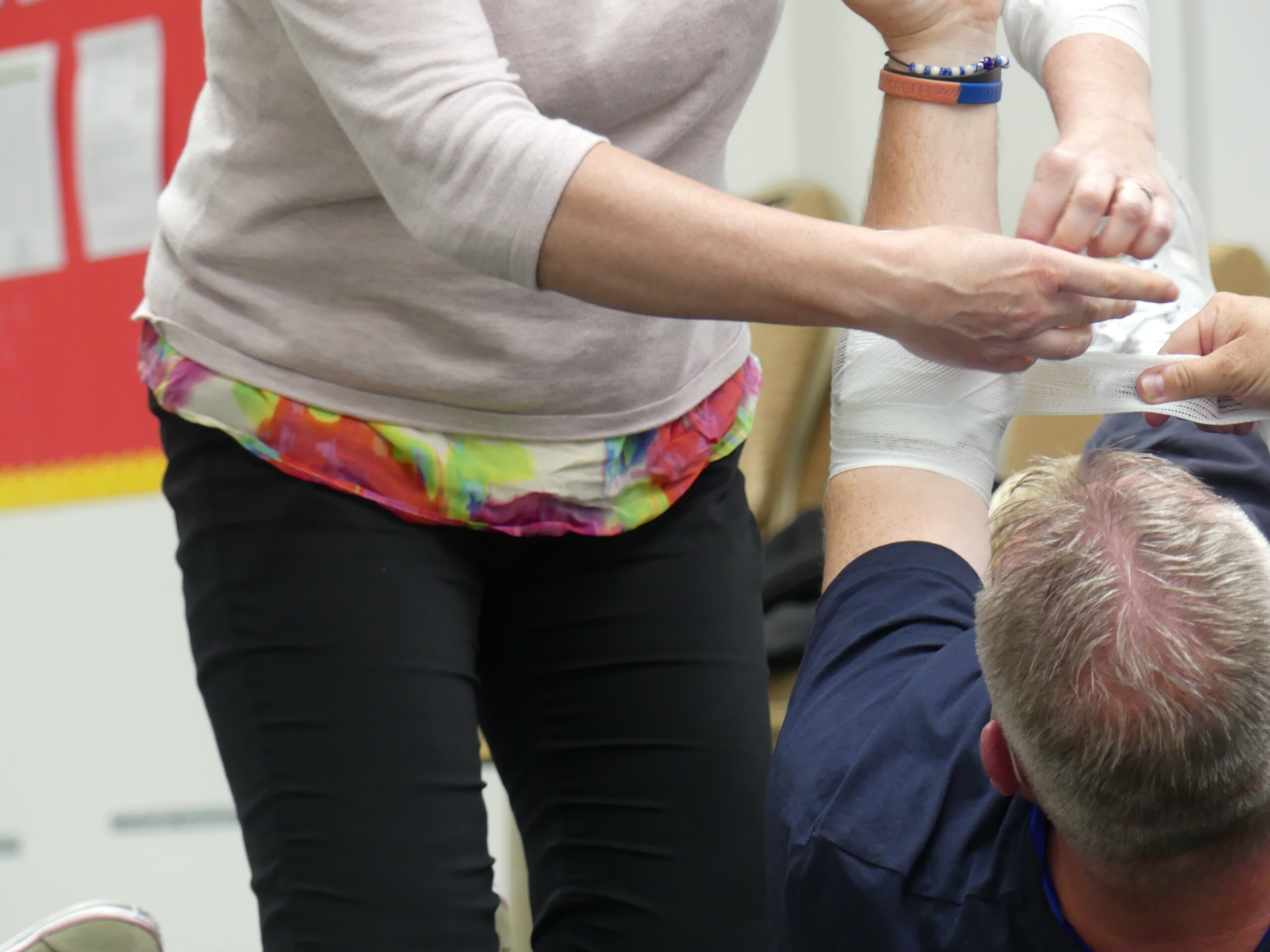Asthma attack
During an asthma attack, breathing becomes increasingly difficult. Learn how to recognise the signs and symptoms and understand the appropriate actions to take when someone is experiencing an asthma attack.

Emergency Advice ⚠️
If someone is having an asthma attack:
- Reassure the casualty and assist them to use their reliever inhaler
- If no inhaler – call 999 or 112
- Encourage them to breath slowly and deeply
- Sit them down
- If the attack doesn’t get better, encourage 1 or 2 puffs of their inhaler every 2 minutes, up to 10 puffs maximum
- If they do not improve call 999 or 112 for an ambulance
- Monitor the casualty’s breathing and response
- If they become unresponsive , prepare to administer CPR
What is an asthma attack?
When someone has an asthma attack, the muscles in the air passages within the lungs go into spasm. This leads to a constriction of the airways, making it difficult to breath. There can sometimes be a trigger, like a cold, medication, cigarette smoke, or an allergen, can trigger an attack. And sometimes, an attack may happen without any noticeable trigger.
Recognition features
Signs and symptoms
Keep an eye out for:
- Difficulty breathing
- Wheezing and coughing
- A feeling of chest tightness
- Agitation and heightened anxiety
- Impaired speech, evidenced by one or two word sentences
- Indications of hypoxia, including a bluish tinge (cyanosis) of the lips, earlobes, and nailbeds
- Weakness and fatigue, particularly in a severe attack.
Treatment for Asthma Attack
- Reassure the casualty and encourage them to take their regular dose of medication from their reliever inhaler (typically blue). Ensure they breathe slowly and deeply.
If they have a spacer device, encourage them to use it with their inhaler. Spacers, when used with the inhaler are much more effective, particularly with young children.
If there is no reliever inhaler, call 999 or 112 for an ambulance.
- Sit the casualty in a comfortable position so they can breathe as effectively as possible. Try to keep them upright and rest their arms on the back of a chair or table.
- A mild attack will normally start to get better after a few minutes. If they do not improve within the first few minutes, it could be a severe attack. Ensure they use their reliever inhaler every 30-60 seconds until they reach 10 puffs. Assist them to use their inhaler if they need help.
- If the attack is severe, the casualty is becoming exhausted, their medication is not working or it is their first attack, call 999 or 112 for an ambulance.
- Continue to monitor the casualty’s breathing and level of response until emergency medical help arrives. If the ambulance doesn’t arrive within 15 minutes, repeat Step 3 ☝️
If the casualty becomes unresponsive, open the airway and check breathing. If not breathing, update the ambulance service and start CPR.
- If the casualty’s symptoms improve and you do not need to call an ambulance, advise them to book an urgent appointment to see their GP or asthma nurse.
Important: This asthma attack information is not for patients on a Maintenance and Reliever Therapy (MART) plan; this may include a steroid preventer medicine and a certain type of long-acting bronchodilator medicine which can also be used as their emergency reliever. The casualty will know which medication they should use in an emergency and may carry a written plan.
Further information
Asthma + Lung UK (asthmaandlung.org.uk)
Train with us
This subject is covered in detail on the following courses that we offer:
Be prepared for anything with our first aid supplies 👀
-
 First Aid Kit – Refill£7.95
First Aid Kit – Refill£7.95 -
 CPR Face Shield Key Ring£3.50
CPR Face Shield Key Ring£3.50 -
 Universal First Aid Kit£15.00
Universal First Aid Kit£15.00




